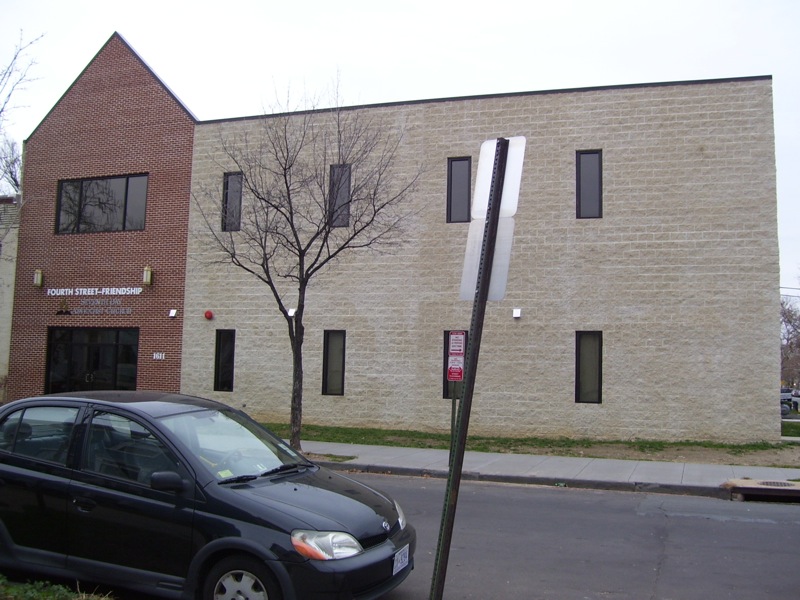I’m just going through old photos.
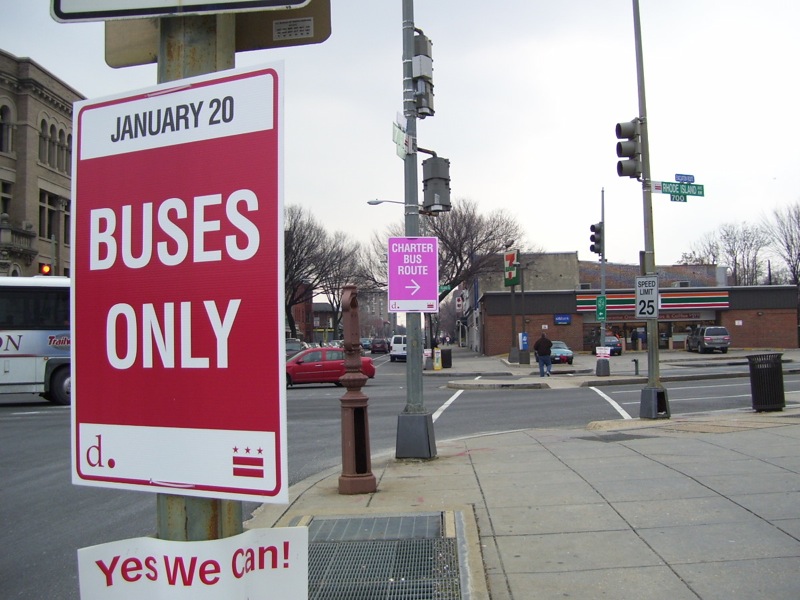
There’s the old 7-11 before it’s facelift not too long ago.
To get an idea to see if what I am seeing with the Black Homeowners of Truxton Circle is normal, or not, I am comparing them with white home owners. It helps to look at blocks that were over 90% white in 1950 but also in the same “red lined” zone, which was F1.
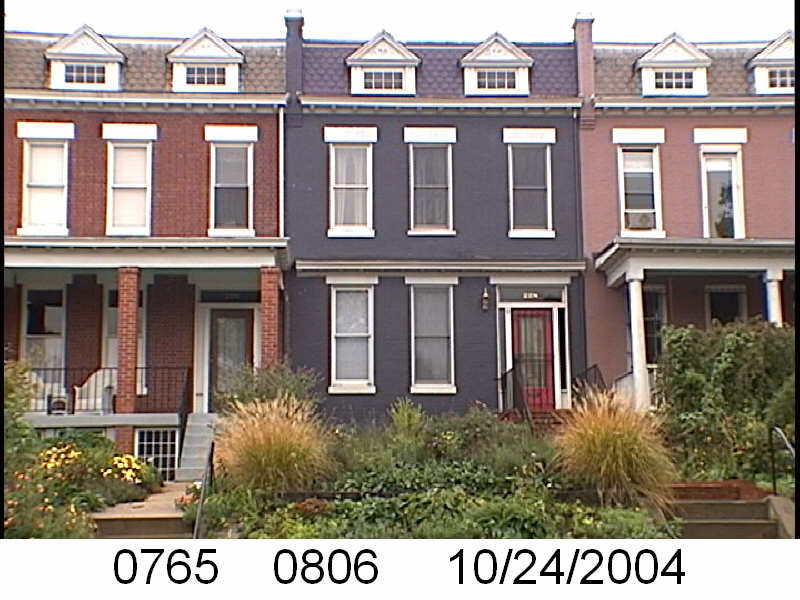
Looking at the Library of Congress map this sits on lot 78 on Square 765 in Capitol Hill. It could also be lot 804, but the earliest the info goes for 804 is 1949, and the Houghs had sold their property by then. Document 1943031037, for lots 78 and 79, has the only instance where Catherine B. Hough appears. The document noted that Catherine B. Hough was the surviving tenant, when her husband William I. Hough died June 17, 1928. The document was a deed where Mrs. Hough sold the property to Therese S. Merrill.
With a search of the Hough name on Sq. 765, lot 77 pops up. However, that appears to be a different house. The first is a 1925 document to release Emma V. Hough and William H. Hough from a 1915 loan from trustees Henry H. Bergmann and George M. Emmerich. December 1944, Emma V. Hough Baker sold the property to Frances, Levi T., and Levi T. Wellons Jr.
William Ira Hough married Katie Bertha Dice in 1887. In the 1900 census, they lived at 600 E St (SE?). William was a machinist and Catherine was a home maker raising their three children, William, Arthur and Helen. In the 1920 census, only two of their adult children lived in the home, Arthur, also a machinist at the Navy Yard, like his father, and Helen, a government stenographer. In 1928 William I. Hough died at home from asphyxiation in the bathroom. Mrs. Catherine Hough died in 1945, after a long illness at Leland Memorial Hospital.
It appears the owner of neighboring lot 77 was the son William Hiram Hough, born in 1891. In 1914 he married Emma V. Speiden. Apparently the daughter of Charles Speiden, who I profiled earlier, and lived a few doors down at 232 SC Ave SE. In the 1920 census they were at 230 South Carolina Ave SE. They had no children. Something must have happened with their marriage because in 1937, William H. Hough married Frances Alice Hall in Fredericksburg, VA and listed his home address as 5414 2nd St NW. He died a few years later in 1940 from an illness. In the Evening Star his obituary noted that his widow was Frances, and they lived at 256 18th St SE. At the time of his death he was a senior engineer aide at the Navy Yard.
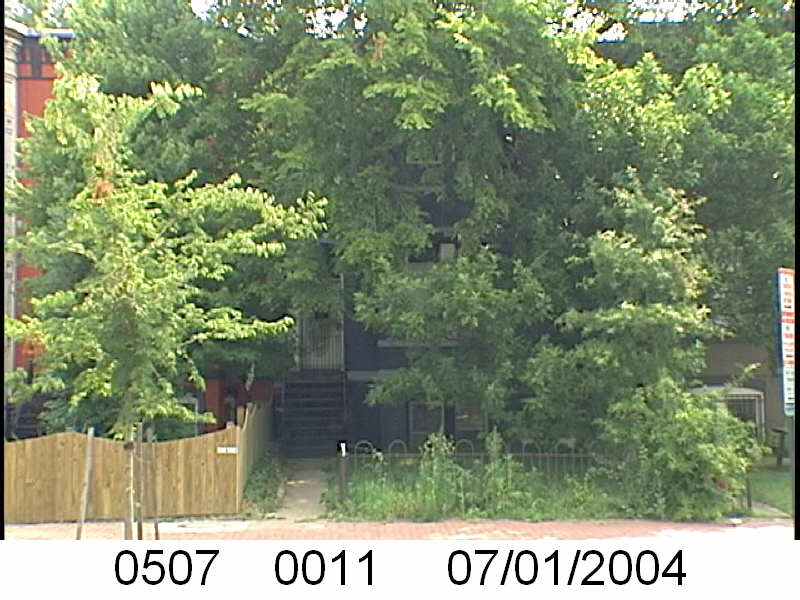
The odd side of the 1700 block of New Jersey Ave NW went from 100% white in 1920 to 100% Black in 1930. I was wondering why, but after doing two of these, it seems obvious. I’m going to fast forward to the answer, people move on, and it appears that around 1920-1921 this row of houses were sold to African American families. By the time the 1930 census enumerators came around Black families had been there for years.
In 1920 renter Harry Somersett Aubinoe (Aulinae in the census) (1882-1968) was a 37 year old auto repairman. He lived at 1703 NJ Ave with his wife Hattie E. (nee Randall) (1890-1959), their two children Randall S. (1909-1969) and Mae/May Estelle (later Fajardo)(1916-1994), Hattie’s sister Ethel O. Poole, their brother-in-law Charles Dewey Poole (1897-1964) and nephew Charles (1918-1997). Harry and Charles were both automobile repairmen, and sister in law Ethel was a telephone operator.
In 1910, Ethel and Hattie were teenagers living with their parents in a very crowded house at 1829 6th St. Harry, lived there too, as he was married to the 19 year old Hattie at the time and working as a metal worker. Son Randall was just a wee babe. I cannot locate Charles Poole in 1910.
In 1930 the Aubinoes were at 905 Buchanan St NW, still renting. The Pooles were difficult to locate for this year. Harry was still working with automobile repair and 20 year old Randall was a US government messenger. Later for his WWII registration in the 1940s, he worked for the US Department of Agriculture and the family was living at 1446 V St SE. Fifty-nine year old Harry had to register and was listed as working for the Sheet Metal Workers Union Local 102.
According to the 1930 census the owner of 1703 NJ Ave NW was a widowed African American school teacher Amelia J. Green (Greene in the census). The earliest document they have is a 1926 loan document for Amelia Green and Grace V. Carroll. When the house is sold in 1953, Amelia Green Magowan is the surviving tenant and Grace V. Taylor had died, but no date was given (September 29, 1935). Grace Taylor was Amelia’s daughter on the 1930 census.
There’s very little information about Mrs. Green, her daughter and son in law Herbert Taylor. In the 1940 census Mrs. Green is mistakenly listed as living at 1705 NJ Av NW with 3 lodgers. Looking in the newspaper was no help either as there was a young lady, also named Amelia Green of Seat Pleasant, MD who was part of an organized thieving ring. However, I found an Amelia Magowan, who lead me to a Noah W. Magowan (1869-1945), who died in 1945 at 1703 New Jersey Avenue. For most of the time Noah was married to a woman named Mary, it’s unclear when Amelia came into his life.
There was an Amelia Magowan (d. 1961) at 1703 NJ Ave NW in the 1950 census.
In conclusion, the white renters remained renters, but renting elsewhere. The African American home owners, Mrs. Green-Magowan and Mrs. Green-Taylor, owned and resided at 1703 NJ Ave NW from roughly 1920/1923 to 1953, a good thirty years.
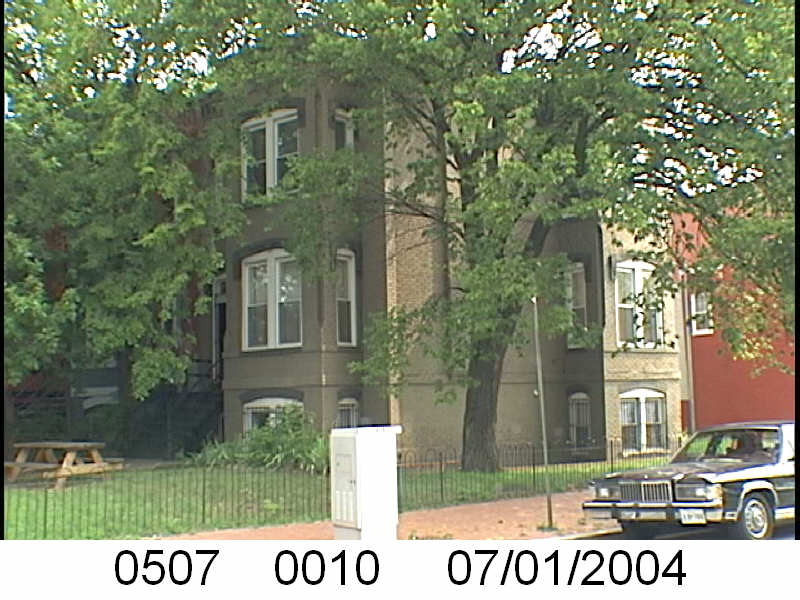
In part one, we looked at two of the three white families who lived at 1701 NJ Ave NW (in Washington, DC) in 1920 before the African American Benjamin Johnson family purchased it.
The third 1920 household were the Saxtys.
Because names get misspelled in the census, the Saxty family show up as Saxtey. It was headed by Lawrence Spalding Saxty (1879-1922), a Navy Yard machinist. He rented their part of 1701 NJ Av with his wife Mary Emma (nee Burton)(1875-1945), his minor children Florence (later Thompson or Thomas) (1914-1993) and Edwin R. (1918-1979), and stepchildren Samuel B (1895-1925) also a Navy Yard machinist, Earl S. (1904-1968) and assistant operator, Howard (1905-1982) and Mildred Virginia Fitzhugh (later May)(1907-1983).
In 1910 Lawrence Saxty was a single man living with his uncle at 630 15th St NE and running a pool hall. Mary was married to a salesman Samuel S. Fitzhugh (1859-1911) living at 1410 D St NE with their children Samuel Burton, Earl, Howard and Mildred. After Sam S. died in 1911, Mary married Lawrence in 1913.
By 1930, Lawrence Saxty and Samuel Fitzhugh were dead. Mary, Florence, Edwin, and Howard managed to avoid the 1930 census. Earl was living with his in-laws at 717 3rd St NE, and working as a rail road station news dealer. Mildred is a little harder to pin down. Ancestry points me to her marrying Edward Delehanty in 1925. But her mother’s obituary has her last name as May, as well as a notation on her brother’s Find a Grave bio. This other route has her married to John James May. So I am going to ignore Mildred going forward. By the 1940 census, Howard was living in the College Park, MD area with his wife and children. Mary, Edwin, Florence and Earl (divorced) were living together with Florence’s two sons at 454 Maryland Ave SW. Edwin was working for the W.P.A. and Florence worked as a waitress.
In 1930, the residents of 1701 New Jersey Ave NW were 57 year old African American USPS postal clerk Benjamin S. Jackson and his wife Grace B. Unfortunately, I hit a dead end. Benjamin does not appear anywhere in the land records. The first document is a 1923 loan document with only Grace L. Jackson’s name. She borrowed … $20? (that can’t be right) at 7% interest from trustees Edmund Hill Jr and Thomas Walker. Usually this is where I would see a mention that the spouse died and when. Here. Nada.
Then I looked at where Grace L. Jackson’s ownership of 1701 ended. It’s interesting, but not helpful. In 1955 the house was sold to Watha T. Daniel…. yes, that Watha T. Daniel for whom the Shaw Library at 7th and Rhode Island Ave NW was named. But the person who sold it was Leonard S. Hayes acting as a trustee in relation to civil action 576-55. Hunting down court cases is a PITA for me, and I’m sure there are answers there.
The last document with Grace L. Jackson’s name is a June 1939 loan document with the Washington Loan and Trust Company (for the Equitable Co-operative Building Association. The loan was for $2,900 and she was released from the loan the next month in July 1939. And there is no mention of anybody else.
Ancestry doesn’t help either.
Jackson is a very common name so I get pushed towards too many false positives. Ancestry wants me to go to Silas Benjamin Jackson. However that man is married to a gal named Bertha, who also has an “L” for a middle name. But that couple is in Free Union, VA and had a boatload of children who were minors in 1930.
But the Library of Congress’ newspaper website is helpful. Benjamin S. Jackson died January 9, 1944 at his residence at 1701 NJ Ave NW. He was a mason and member of the John F. Cook lodge. There was a “session of sorrow” at the Elks Lodge at 301 Rhode Island Ave NW. He left behind Grace L. Jackson and nieces and a brother in law in Ohio and Indianapolis. There was no mention of any children. There was a wake at his home and the funeral at Asbury Methodist Episcopal Church.
Grace L. Jackson died in 1953 at her home on New Jersey Ave. There was no mention of any relatives or loved ones in her small obituary. The funeral home handling her arrangements, Melvin & Shay, were at New Jersey and R, so across the street. I wonder if the funeral home was the same building her husband protested the classification as commercial of 414 R St NW, where the daycare Home Away from Home sits? In 1936, Benjamin S. Jackson was the named representative of a group of Black residents objecting to the commercial classification. He and his neighbors were concerned that the classification change would bring in a liquor store. Ah protesting possible liquor stores, things never change…..
So in conclusion with this change from white to black, it is the same as with 1735 NJ Av, people move on. All three of the 1920 households were renters, and renters move around. They weren’t at 1701 NJ Ave in 1910 so why would they still be there 10 years later? Several of the 1920 girls grew up, got married and started families. A few residents died, never making it to 1930. Besides sometime between the 1920 census and 1923 when Grace L. Jackson took out a loan, the house was sold to the Jacksons so the Saxtys, the Smiths and the Comelys had to vacate anyway. The idea of blockbusting doesn’t apply here because the three renting households weren’t owners, so they could have been pressured to sell what wasn’t theirs.
Usually I recognize Black History Month by looking at the father of Negro History Week ( which became Black History Month), Dr. Carter G. Woodson and his most famous book The Mis-Education of the Negro.
I’m not doing that.
Instead I will do some Truxton Circle based Black History and look at a very interesting book, First Class: The Legacy of Dunbar, America’s First Black Public High School by Dunbar alumna Alison Stewart. I first listened to the audio-book and was so blown away, I bought the dead tree version.
So that’s what’s in store for February 2024.
That and more of the 1700 block of New Jersey Ave NW.
In March I’ll get back to WSIC houses.

In 1920 the odd side of the 1700 block of New Jersey Ave NW was 100% White. So let’s look at 1701 New Jersey Ave.
In 1920 census there are three households living at 1701 New Jersey Ave NW. The first is headed by George Richard Comley (Conney in the census), a 31 year old hotel chauffeur on his 2nd marriage. He lived with wife Gertrude Hattie Scheuch (1900-1923), baby Marguerite, and daughters from a previous marriage, Ruth (1908-1991) and Ethel.
I was able to clear up the Comley’s name discrepancy and discover the 2nd marriage via George’s daughters Ruth Mae (later Scott), then 11 and 9 year old Ethel Elizabeth (1910-1993). In 1910, driver George and then wife Florence (nee Arrington) were living at 1014 7th St NE with son George and daughter Ruth M.. Ethel was born August 10, 1910 and her social security docs say Florence was her mother. When WWI rolled around (1917), George was divorced with 3 dependent children.
I can’t find George R. Comley past the 1930 census. It is possible he died of a heart attack in 1931. It also appears he was an optimist on his 3rd marriage with Helen Hogan (1893-1952) living at 1607 O St NW. That census year he was still working as a chauffeur, living with 10 year old daughter Margaret E. (later Hutchins) (1919-1996) and 7 year old Marie G. (1922-1997). By 1930 Ethel had become Mrs. Pitcock, living in Colesville, MD with her husband and two young boys. Older sister Ruth managed to disappear until her death. Maybe because she was in jail from a vague embezzlement 1935 arrest?
The second household were the Smiths, headed by 27 year old traffic cop Ellis W. Smith (1892-1975). He lived with his 21 yr old brother, Leon S. Smith (1898-1982) an electric car conductor, 17 yr old sister Grace (later Tubbs)(1902-1995) a cigar store saleswoman, and 59 year old widowed mother, Annie E. Smith (nee Hodgeson) (1860-1927). Ellis briefly served in the Army during WWI.
By 1930 the Smiths had moved on but not far. The mother Annie was dead. Sister Grace had married Victor Tubbs and was mother to two girls, Iva & Emma, and a son, Nelson. She lived at 139A Bates St NW. Looking back at the newspaper search for 139 Bates, I see Annie Smith died there. That same newspaper search reveals son Nelson Tubbs was there in 1949 when marrying, literally the girl next door, Beverly J. Trite, of 137 Bates St NW. By the 1950 census, Victor and Grace were empty nesters. In 1930, Ellis was a White House policeman, and had moved to Cottage City, MD in PG County. He lived there with his wife Lucy, daughter Barbara and son Robert.
Brother Leon Standford Smith was in Cleveland, OH in 1930 working in the auto industry. At age 31, he married Ida Maude Miller in 1929 in Homer, MI. By 1940, he was back in DC working as a guard, and back in Truxton Circle at 219A Bates St NW with his wife, an adopted daughter and a couple of lodgers, Mrs. Morgan and her baby Nancy. In 1950 the Smiths were at 3940 Blaine St NE, with their 20 year old daughter who was separated, their 2 grandchildren, and a 10 year old lodger by the name of Nancy Morgan. In the 50s Leon worked for the US Post Office. When he died in Florida, he was a retired mail handler.
This is getting fairly long, I will deal with the third household of the Saxtys in part 2.
When I took this photo back in 2008 I did not know that the corner house had history. That it was the home of the notable Pocahontas Pope.

So much has changed since then. It’s been renovated and now I am more familiar with it’s notable former resident.
It was on the market last year, but I see the listing was removed. Well, better luck in 2024!
I’ve been updating the blog and uploading posts from 2010. It’s slow work because I can’t figure out how to turn old Movable Type html files into a file the importer can read. Luckily I found what I was looking for in another spot.
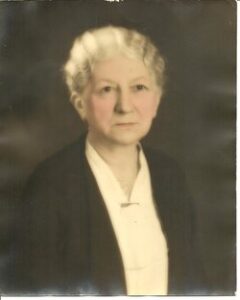
I was looking for Mrs. Flynn. In 1920, Mrs. Rosa Lee Smith Flynn rented 1735 New Jersey Avenue NW, living there with her three adult daughters, Ethel, Edna (Florence?) and Frances and two sons, George and Charles.
She was a widow at the time (1920), as her husband Zachariah Taylor Flynn died in 1907. They had twelve children. Roley (1879-1905); George (1880-1929); Jane; Henry (1883-1969); Zachariah (1885-1961); Daisy (1887-1951); Benjamin (1888-1953/1962?); Ethel (1890-1924); Florence Edna (1892-1922); Frances (1890-1961); William (1898-??); and Charles (1899-1984).
Prior to living in the District of Columbia and Zack’s death, they were on a farm in the town of Scott in Fauquier County, VA. In 1910, she lived at 112 P St NW, in Truxton Circle. Son George, aged 29 worked as a bookkeeper for a dairy. Maybe the dairy on the 1600 block of 1st St NW? George (bookkeeper), Daisy (a dressmaker), and Edna (clerk in dry goods shop) appear to have supported their mother and younger siblings, Frances and Charles.
When we arrive at 1920, with the exception of Francis, her adult children are all working and supporting her.
I asked myself the question of why was there a 100% racial change on that stretch of New Jersey Ave from 1920 to 1930 and the Flynns provide a mundane answer. Life went on. Continue reading Change from 1920 to 1930, White to Black, Flynn to Keasley- 1735 New Jersey Av NW
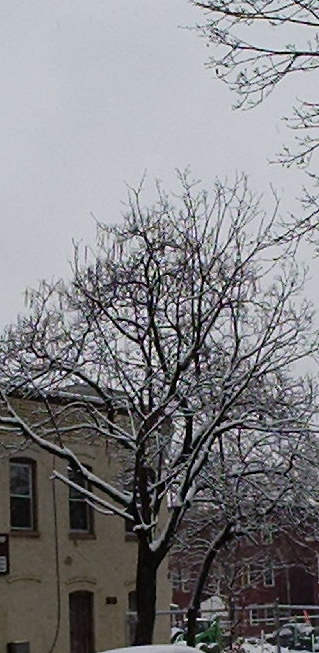
Happy Boxing Day.
A quick look at this photo taken in 2005 shows the block before the Fourth St Friendship Seventh Day Adventist church built their modern wing. It appears ground had been broken and fencing was up.
